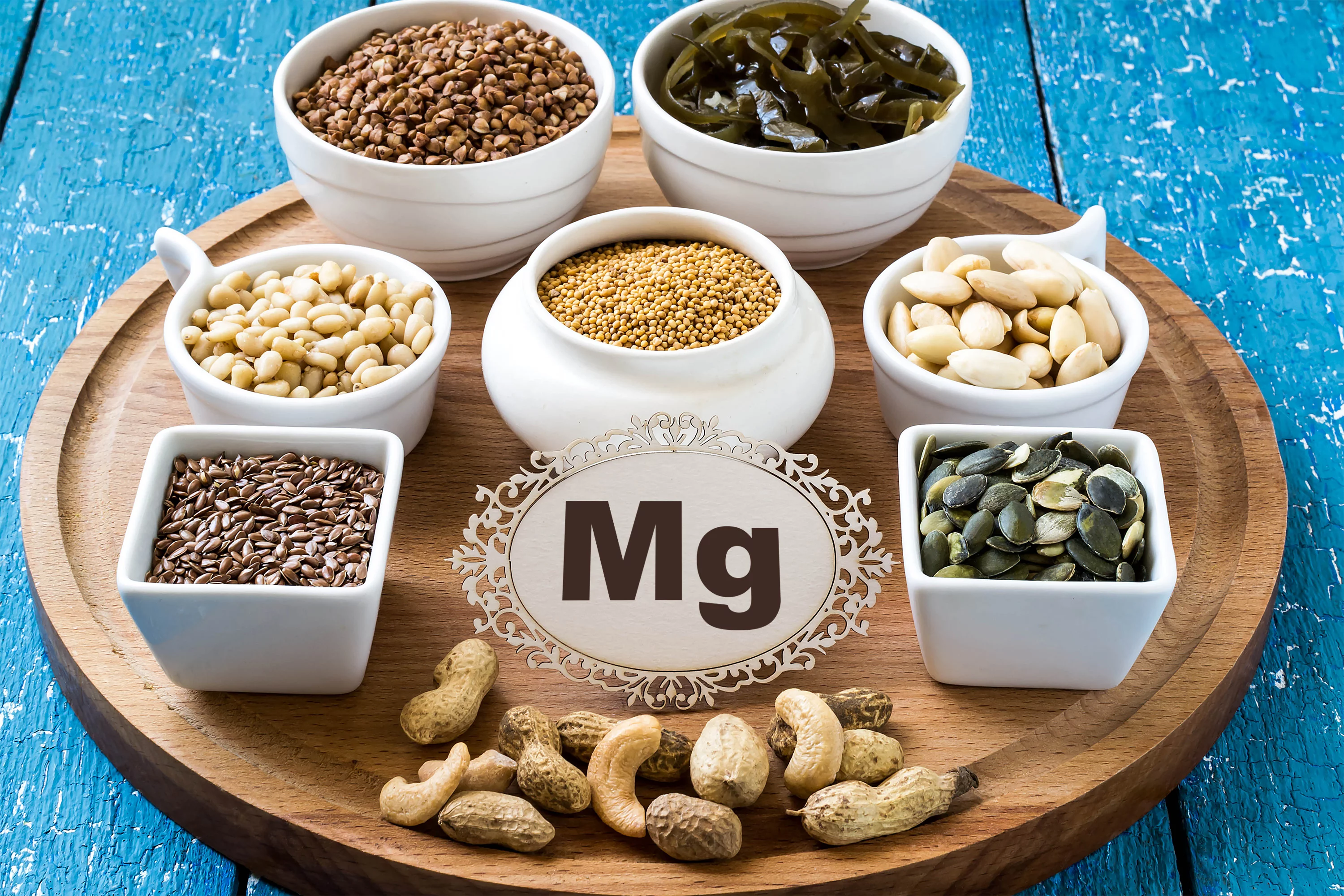Magnesium: magic tablets for energy and flexibility

If you were to ask athletes which minerals they considered to be key to their performance, they would probably mention calcium, iron, zinc or chromium, but only a few of them would mention magnesium. Despite its unquestionable positive effects on our health and performance, a large number of trainers and their coaches neglect its income. Over the past hundred years, the average daily intake of magnesium has fallen by almost half and the declining trend continues. In this article, therefore, we will talk more about magnesium - why it is important how much we should obtain it, and why we should not overlook it.
Magnesium is a silver-grey shiny metal and at the same time the eighth most widespread element in the earth's crust. Under typical circumstances, it is bound in the form of an oxide, in particular as magnesium oxide, so that the magnesium is protected from the adverse effects of air and water. In the human body, magnesium occurs in the form of ions - magnesium cations (Mg2 +) - and is the second most abundant ion in cells after potassium. It occurs mainly in bones and muscles; in minimal amounts it is found in blood plasma. Paradoxically, it is plasma magnesium that serves as an indicator of its level in the body, because it is biologically active, which in practice means that it is engaged in a number of biological processes (more on that below).
In food, magnesium is most ubiquitous in whole grain products, it is also found, for example, in leafy vegetables, nuts, seeds and legumes. Contrary to popular belief, milk and dairy products are not its most ideal sources, as are meat, fish and fruit. This bumpy distribution can be explained by the instability of magnesium at high temperatures - whole grain products, unlike vegetables in everyday life, are rarely heat treated.
Magnesium is involved in more than three hundred enzymatic reactions involved in the production of proteins, fats and nucleic acids, as well as neurological activities, contraction and relaxation of muscle fibres, including heart muscle, bone metabolism and more. An even more important function of magnesium is its role in the formation of adenosine triphosphate (ATP), the main energy substance. Enzymes, so-called ATPases, which inevitably need magnesium to function, are involved in the production of ATP. ATPases must work extremely efficiently in the body - our body can temporarily store a maximum of 0.08 kilograms of ATP for its needs, but it consumes up to 15 kilograms during an hour of exercise!
Magnesium deficiency is presented throughout all organ systems of the human body. It most often affects the cardiovascular system in the form of electrocardiographic abnormalities (ECG), increased insulin resistance, or its insufficient excretion and increased blood pressure. In addition, neuromuscular disorders, renal disorders, exacerbation of asthma, migraines, premenstrual syndrome, postmenopausal musculoskeletal disorders and obesity have been described in this context [1-5]. The recommended daily dose of magnesium ranges from 280 to 350 milligrams, depending on age, gender and physical activity carried out [6,7].
When should you sit up?
- if you experience long-term stiffness, cramps or excessive tremors of the facial, chewing, neck, mimic or limb muscles
- if you are regularly or excessively tired
- if you are irritable or lethargic
- if your mood changes very often, you are anxious and depressed
Several studies have been performed on magnesium intake in the sports population. One of them, a three-month American study, examined how magnesium deficiency affects the performance of ten women. During the first month, they received approximately 100 milligrams of magnesium, in the second month twice and in the third month the recommended (300 mg) amount of magnesium. At the end of each month, the women underwent a stationary bicycle exercise test until they reached 80 percent of their maximum heart rate, followed by electrocardiography, spirometry, and blood tests. The researchers found that at the end of each monitored period there was a significant increase in the monitored parameters! To put it in plain language, insufficient magnesium intake has led to a slowdown in metabolism, increased oxygen consumption and increased heart rate, or even strain on the heart [8].
What should you do to get enough magnesium?
- consume wholegrain products instead of those made from white flour, leafy vegetables, nuts, seeds
- limit alcohol consumption
- avoid high protein or low carbohydrate diets
- large amounts of magnesium consumed at one time can cause digestive problems because they neutralize stomach acid - so divide the recommended daily dose of magnesium into several portions
- if you think you are not getting enough magnesium, include nutritional supplements in your diet to deliver it to your body in an effective form.
How to choose the right nutritional supplement?
In the market, you will find many accessories from different manufacturers, with different strengths and in several forms. When choosing, it should be noted that the dose of the compound declared by the manufacturer in the relevant supplement is not the same as the pure magnesium content. For example, 300 mg of the respective magnesium salt is not 300 mg of pure magnesium, and the like. Another important factor is absorption - while the body uses only 4% of the amount used from oxide, from lactate, citrate or chelate, or in combination with vitamin B6 (pyridoxine) much more. All forms are best absorbed when taken with food.
What form of supplement to choose?
Effervescent tablets, or powder, contain a higher single dose of magnesium and are therefore suitable for rapid supplementation, for example in case of muscle cramps or headaches. The effervescent form accelerates the onset of its effect, and at the same time prolongs its duration. Conventional tablets on the other hand, are more suitable for long-term use - they contain smaller amounts of magnesium, the regular use of which helps maintain its stable level in the blood plasma or the body as such.
SOURCES
Nadler JL, Buchanan T, Natarajan R, Antonipillai I, Bergman R, Rude R. Magnesium deficiency produces insulin resistance and increased thromboxane synthesis. Hypertension. 1993;21(6 Pt 2):1024‐1029. doi:10.1161/01.hyp.21.6.1024
Rude RK. Magnesium metabolism and deficiency. Endocrinol Metab Clin North Am. 1993;22(2):377‐395.
Paolisso G, Scheen A, D'Onofrio F, Lefèbvre P. Magnesium and glucose homeostasis. Diabetologia. 1990;33(9):511‐514. doi:10.1007/BF00404136
Bo S, Milanesio N, Schiavone C, et al. Magnesium and trace element intake after a lifestyle intervention. Nutrition. 2011;27(1):108‐110. doi:10.1016/j.nut.2010.04.005
Djurhuus MS, Gram J, Petersen PH, Klitgaard NA, Bollerslev J, Beck-Nielsen H. Biological variation of serum and urinary magnesium in apparently healthy males. Scand J Clin Lab Invest. 1995;55(6):549‐558. doi:10.1080/00365519509075394
Bruntlett E, Buse JB. The role of medical nutrition therapy in type 2 diabetes. Mediguide Diabe- tes, 1997, 4: 1–6.
Whang R, Hampton EM, Whang DD. Magnesium homeostasis and clinical disorders of magne- sium difeciency. Ann. Pharmacother., 1994, 28: 220–226.
Lukaski, H. C., & Nielsen, F. H. (2002). Dietary magnesium depletion affects metabolic responses during submaximal exercise in postmenopausal women. The Journal of nutrition, 132(5), 930–935. https://doi.org/10.1093/jn/132.5.930




